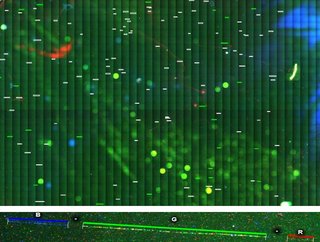Scientists at the University of Cologne have shown that increased levels of the protein Plastin 3 in cells can lead to women remaining symptom-free even though they have the genetic mutation for spinal muscular atrophy, a form of muscular atrophy. The information for Plastin 3 is stored in the human genome on the X chromosome, which is the female sex chromosome. While men have one X chromosome and a Y chromosome, women have two X chromosomes. However, only one X chromosome is needed for cell function, so that one of the two chromosomes is inactivated by chance during the development. However, up to 15% of genes located on the inactivated X chromosome can escapeX-chromosomal inactivation under natural circumstances and both copies of the gene can be read.
A research team led by Professor Dr Brunhilde Wirth at the Institute for Human Genetics at the University Hospital Cologne and the Center for Molecular Medicine Cologne (CMMC) has now discovered that Plastin 3 can also escape X-chromosomal inactivation if a specific DNA segment on the X chromosome (the so-called DXZ4 macrosatellite) comprises more than 70 repeating units. As a result, Plastin 3 is read by both X chromosomes. Women who both have the genetic predisposition for developing spinal muscular atrophy and produce increased Plastin 3 expressions remain symptom-free. The study ‘Epigenetic regulation of plastin 3 expression by the macrosatellite DXZ4 and the transcriptional regulator CHD4’ has been published in the renowned American Journal of Human Genetics.
The research team used the so-called ‘molecular combing’ to examine DNA from blood samples of patients. In this procedure, the scientists compared the DXZ4 DNA segment of women who remained symptom-free with women and men with spinal muscular atrophy and healthy participants. “Females who had an overexpression of Plastin 3 showed on average more repetitions than usual of the DXZ4 macrosatellite,” said Dr Eike Strathmann, first author of the study. In addition, the scientists demonstrated in further experiments that motor neurons from women who had no symptoms produce twice as much Plastin 3 as their affected male siblings. The particularly repetitive DNA sequence partially disrupts the inactivation of the X chromosome, allowing the Plastin 3 gene to escape X inactivation. This in turn protects women from symptoms of spinal muscular atrophy.
In addition to repetitive DXZ4 DNA units, Strathmann has identified another protein complex that regulates the production of Plastin 3 in both women and men. “The regulation of Plastin 3 is so interesting because, in addition to its protective effect in the case of spinal muscular atrophy, the excess is also observed in various types of cancer. In these cases, however, this is associated with a worse prognosis,” said Professor Wirth.
She believes that in the future, the length of the DXZ4 DNA sequence that alters the X inactivation can be used specifically for diagnosis as well as for prediction using special techniques (long-read next generation sequencing) and improved bioinformatic tools.
Media Contact:
Professor Dr Brunhilde Wirth
+49 221 478 84 86464
brunhilde.wirthuk-koeln.de
Press and Communications Teams:
Dr Anna Euteneuer
+49 221 470 1700
a.euteneuerverw.uni-koeln.de
Publication:
Strathmann EA, Hölker I, Tschernoster N, Hosseinibarkooie S, Come J, Martinat C, Altmüller J, Wirth B. Epigenetic regulation of Plastin 3 expression by the macrosatellite DXZ4 and the transcriptional regulator CHD4. American Journal of Human Genetics
https://doi.org/10.1016/j.ajhg.2023.02.004
